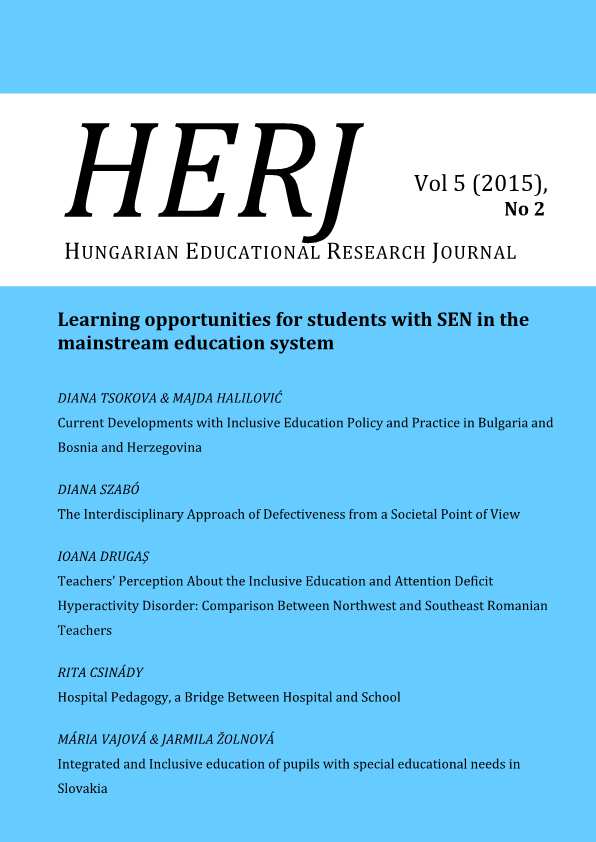Integrated and Inclusive Education of Pupils with Special Educational Needs in Slovakia
Integrated and Inclusive Education of Pupils with Special Educational Needs in Slovakia
Author(s): Mária Vajová, Jarmila ŽolnováSubject(s): Education
Published by: Hungarian Educational Research Association (HERA)
Keywords: Integrated and Inclusive education; Pupils with special educational needs; Special Education Programs; Student with mental disabilities
Summary/Abstract: Slovakia became since 2008, the new Education Law (245/2008), which defines all levels of public education, the education of students with special needs students in the conditions and forms. This law guarantees equal educational opportunities for all students, which means also that the parents may request that a school receives for disabled children, and in such cases, the principal shall ensure that the conditions of teaching and education organization without barriers . Obviously, the new duties and obligations imposed by the Act on integrated / inclusive education constituted a major shift in how teachers are really unprepared. Creating the conditions for inclusive school education of pupils with disruptive behavior and disabilities requires knowledge of the development of a school’s success. Among the determinants of school success we include the interpersonal relationships of everybody involved with the school. A survey which studied relationships in the classroom using the analytical methods of A. N. Flanders indicates that teachers use a non-directive style of teaching with these students. Micro teaching analysis shows the percentage dominance of individual interpretation of the curriculum, giving assignments. Objective assessment of the underlying performance was to provide an overview of the current state of education in integrated education teachers' perspective. Understanding the attitudes of teachers regarding the cooeducation happened questionnaire in which 142 schools 368 teachers participated.
Journal: HERJ Hungarian Educational Research Journal
- Issue Year: 5/2015
- Issue No: 2
- Page Range: 66-84
- Page Count: 19
- Language: English

